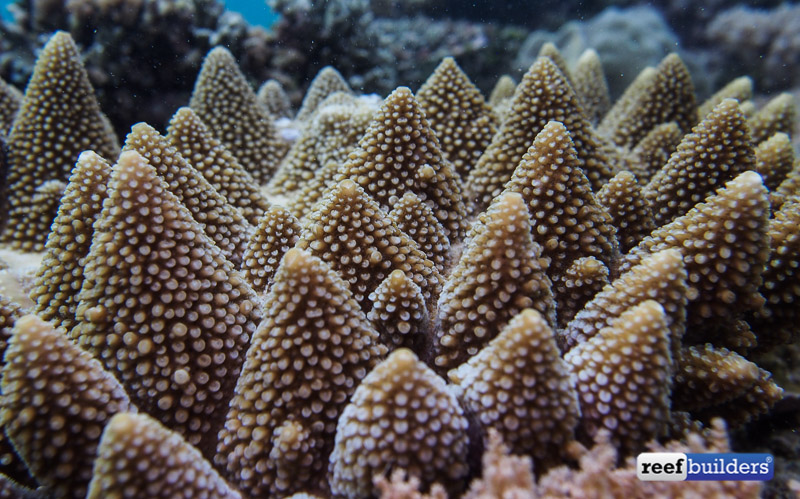Acropora monticulosa is one of our favorite corals out on the reef, it grows to massive sizes and looks more or less like a huge living crystal when you see it in the wild. Due to its massive size and mild coloration, it is one of the least suitable or desirable corals for aquariums, but that doesn’t preclude us from enjoying it from a distance.

Of all the stony corals we can think of, no other species looks more like a fractal than Acropora monticulosa. In fact, Monticulosa looks so much like a fractal that you could be mistaken for thinking that someone had dropped a patch of fractal cauliflower in the ocean and colored it mild brown.
Monticulosa Acros are almost always a light brown, occasionally you can find specimens with the lightest pink tip, but these are rare and few between. Unlike many thin-branching species of stony corals. A. monticulosa grows so massively that there is simply no way you’ll ever be fragging it with your hand, using clippers, or anything but a hammer and chisel.

A. monticulosa is so massive at the base, and sharp at the ends, when we think of corals sinking from striking the reef, this is the species that comes to mind as breaching even the thickest wooden ship hulls. If you were to wipe out surfing on a reef, you would rather run into cat’s paw acropora or stout-branching Pocillopora than this species as at least the former might break and give after a certain amount of force, whereas monticulosa is sure to simply strip away your delicate flesh.

Almost no other species of Acro looks quite like the pyramidal shaped branches of Acropora monticulosa. Sometimes you might see a particularly thick branching A. gemmifera, but next to Monticulosa the branches of gemmifera are particularly anemic.
Even if you wanted to grow Acropora monticulosa in a home aquarium, it only grows in shallow, wave-washed reef zones so you would have to pound it with so much flow and light that hardly no other corals could survive alongside it. This species is quite a looker when it gets to large size so it would be particularly well suited for display in large public aquarium reef tanks.




